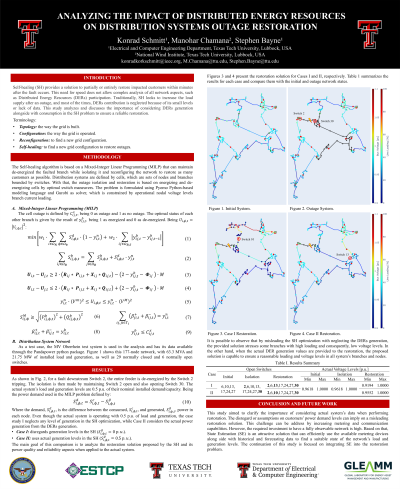Back

Grid Integration
Analyzing the Impact of Distributed Energy Resources on Distribution Systems Self-Healing
Tuesday, September 12, 2023
4:30 PM - 5:30 PM PDT
Location: Poster Area, Booth #11024, Level 1, Venetian Expo Hall


Konrad Schmitt, n/a (he/him/his)
Research Assistant
Texas Tech University
Lubbock, Texas, United States
Poster Presenter(s)
Background, Description, Delivery and Learning Objective Distribution systems are a key bridge between upstream transmission systems and downstream customers. Due to its radial characteristic, distribution networks are highly susceptible to de-energize a large number of customers during an outage event. Through distribution network reconfiguration (DNR) techniques, self-healing (SH) provides a solution to partially or entirely restore impacted customers. However, the SH approach is required to change the network configuration to restore as many customers as possible within minutes after the fault occurs. This need for speed does not allow complex analysis of all network aspects, such as Distributed Energy Resources (DER) location and generation levels. Nevertheless, by neglecting these generation resources over the network, SH's solution may reduce the network stability and power quality, besides potentially compromising protection coordination and selectivity. This study analyzes and discusses the importance of considering DERs in the SH problem formulation to ensure a stable and reliable operation of the system during and after the restoration. The approach is based on considering the network power flow and short-circuit levels before, during, and after the restoration to evaluate the algorithm's solutions' reliability. Use case results are presented along with a discussion on how SH should expand its formulation to embrace emerging dynamics, such as DERs.
